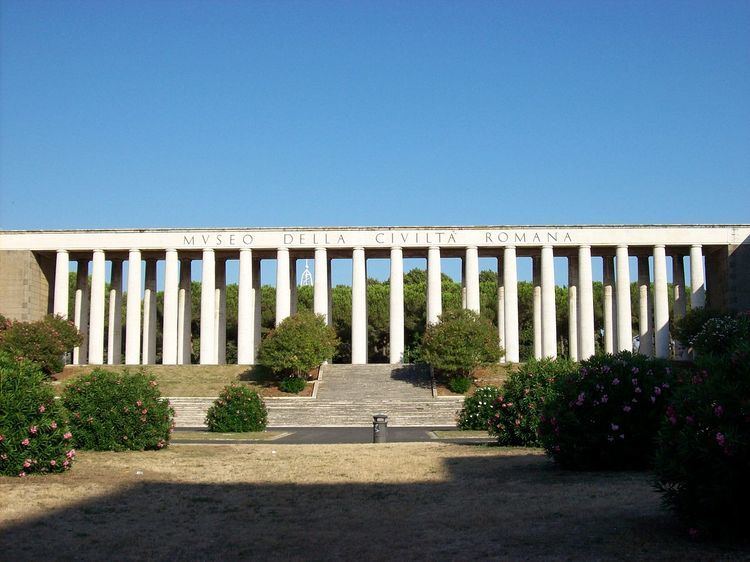Established 1952 (1952) | Phone +39 06 0608 | |
 | ||
Type archaeology, Art museum Website www.museociviltaromana.it Address Piazza Giovanni Agnelli, 10, 00144 Roma, Italy Architects Pietro Aschieri, Gino Peressutti, Domenico Bernardini, Cesare Pascoletti Similar EUR - Rome, Museo Barracco di Scultura, Museum of Rome, Pigorini National Museum, Palazzo dei Conservatori Profiles | ||
Spectre rome daylight scenes at colosseum and the museum of roman civilization
The Museum of the Roman Civilization (Italian "Museo della Civiltà Romana") is a museum in Rome (Esposizione Universale Roma district), devoted to the aspects of the Ancient Roman civilization.
Contents
- Spectre rome daylight scenes at colosseum and the museum of roman civilization
- History and General Introduction
- Structure of the Museum
- The Historical Sections
- The Thematic Sections
- The Model of Imperial Rome
- Appearance in popular culture
- References
History and General Introduction
It was designed by the architects Pietro Ascheri, D. Bernardini and Cesare Pascoletti (1939-1941). Its 59 sections illustrate the history of Roman civilization, from the origins to the 4th century, with models and reproductions, as well as original material. The premises are shared with a planetarium.
It houses, among other things:
Structure of the Museum
There are three main different itineraries through the Rooms of the Museum:
The Historical Sections
The Thematic Sections
The Model of Imperial Rome
Appearance in popular culture
In the James Bond film Spectre, the marble colonnade of the museum doubled as a cemetery after the Archconfraternity of the Departed confraternity barred the filming of a funeral scene at the Campo Verano cemetery.
